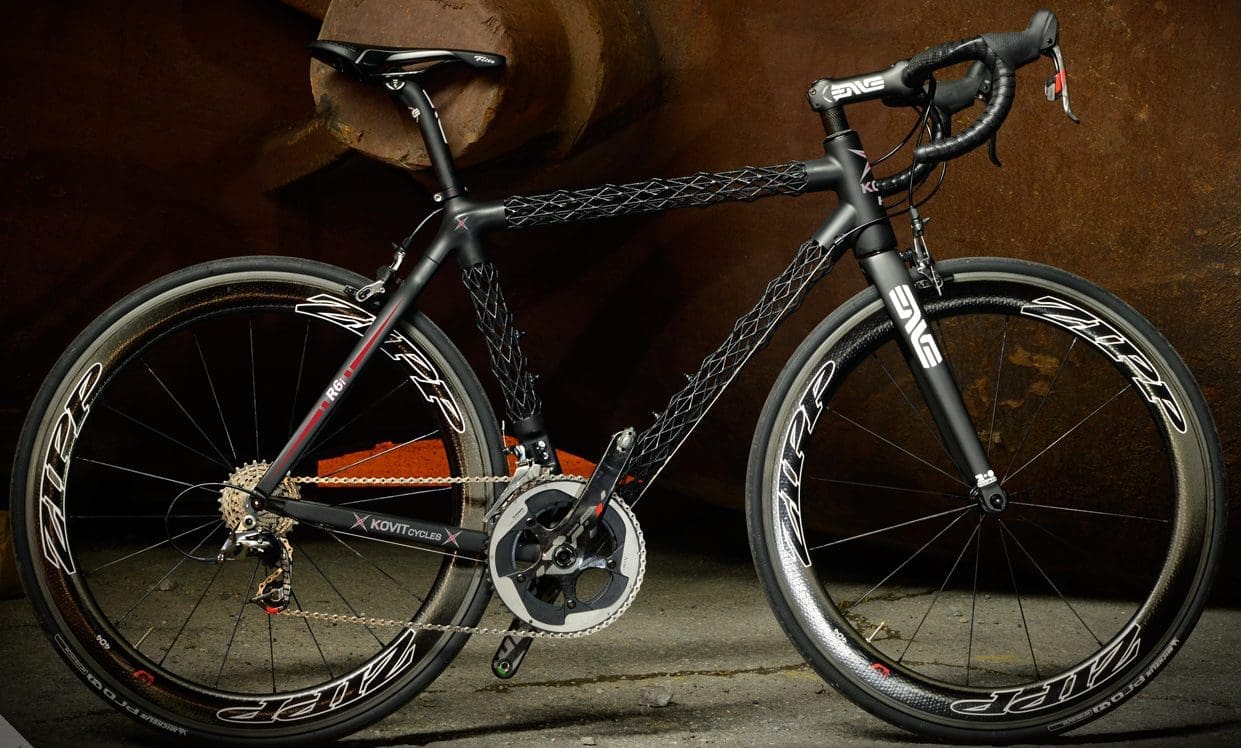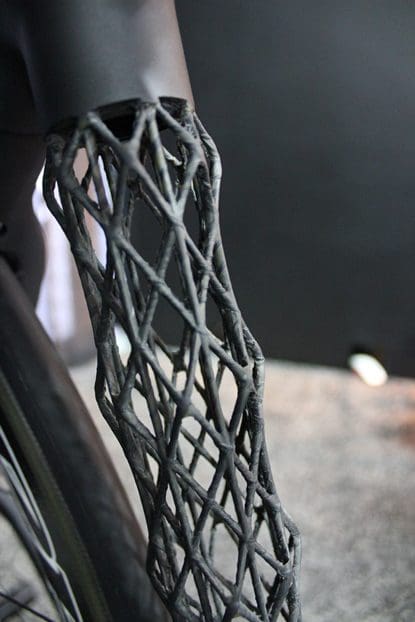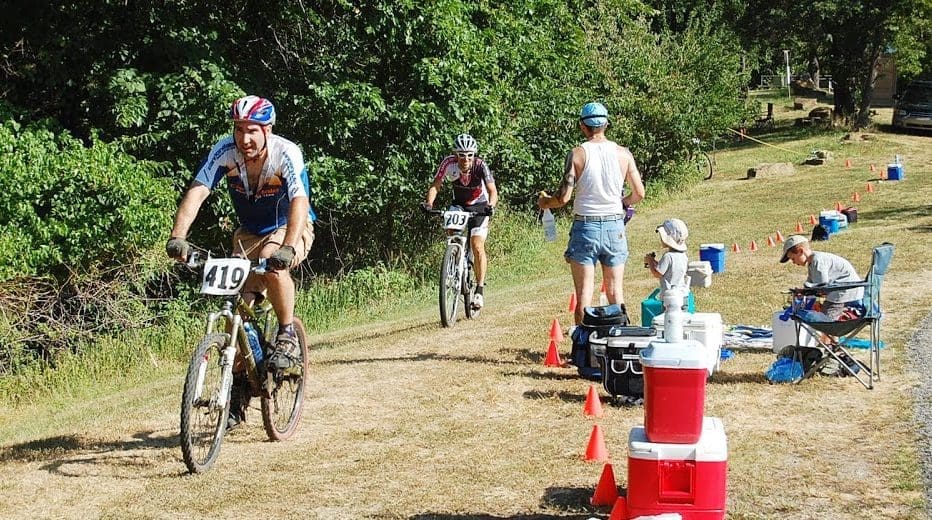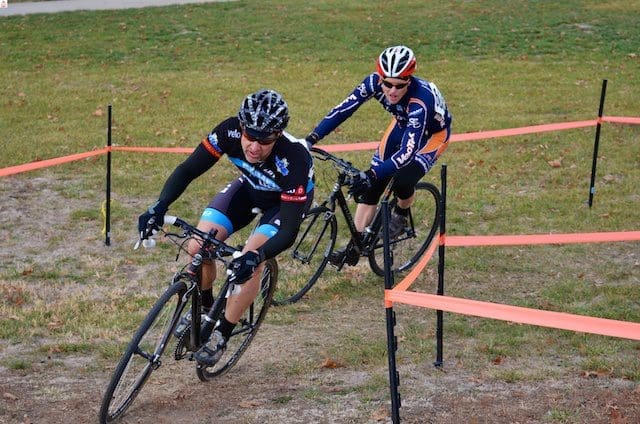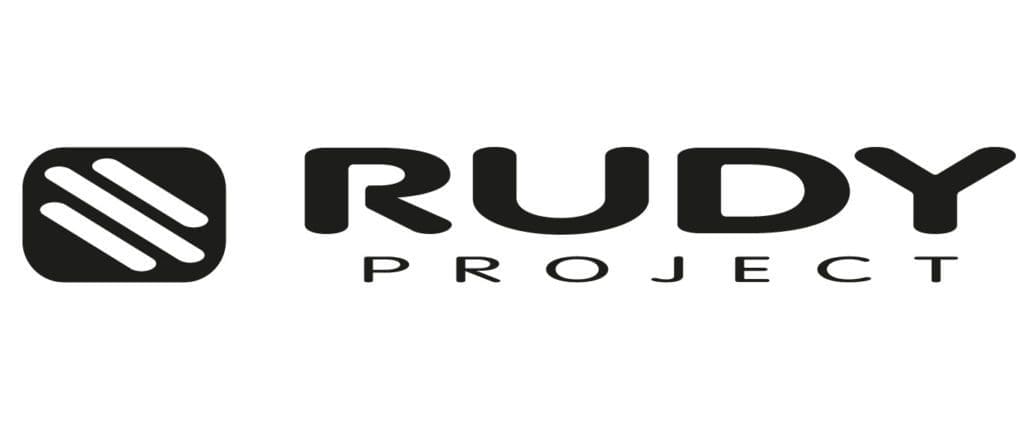Sometimes, when you are the new kid on the block you tend to go unnoticed; this wasn’t the case for Kovit Cycles as they launched their company and their first production bike, the R6i, at Interbike in Las Vegas last week. As they strolled around The Outdoor Demo at the beginning of the week, and displayed the R6i at their booth the rest of the week, everyone stopped to ask, “What is the deal with that bike?” It was hard to ignore the unique IsoTruss frame tubing which, instead of a traditional solid tube, employs an open lattice structure for which they have 40 international patents. Based out of Springville, Utah Kovit Cycles makes their bikes 100% by hand from the carbon lay-up process, to cutting the molds on the CNC, it is all made right there in Utah from start to finish.
Research and Development
To understand Kovit Cycles and their bike, you need to understand a little about the R&D behind the unique design. Dr. David Jensen, of Brigham Young University, has been working on the carbon composite structure for the past two decades. His initial objective in developing the new technology was to develop lighter weight structures by taking advantage of the inherent properties of carbon fiber. Initially, Dr. Jensen and his team aimed their sights at aircraft components and concrete reinforcement; he wanted to make use of the carbon fiber by putting it into the open lattice structure to take advantage of the benefits the geometry had to offer. The superior strength and lighter weight of IsoTruss made it a great candidate for these applications.
When the idea was eventually floated around to build a bike using the structure, Jensen says it was very well received. “A lot of students came out the woodwork when we suggested using it for a bike. The bicycle offered an exciting work-space. The structure’s first use in a bicycle was published in a thesis in 2000. The bike was ugly, but it demonstrated the potential [of the structure].”
Three more bikes were created using the structure at BYU and the first bike to be launched outside of BYU was through Delta 7, which was a partnership with company founder Ed Christensen. After 2-3 years, business issues saw the eventual demise of Delta 7. However, Christensen has things rolling again with Kovit Cycles. Since Delta 7’s inception and eventual disintegration, Ed and the team at Kovit Cycles have taken advantage of improved manufacturing techniques which have brought the price for the frames down from around $8000 to around $3500.
Strength and Weight
The R6i road frame is their first bike to officially launch with sizes ranging from 49cm up to 63cm. The frames are amazingly light, which isn’t really surprising considering the IsoTruss structure eliminates a lot of material in the construction of the tubes. They anticipate their production frames to weigh in the 700 gram range but they had a beautifully painted ultralight frame on display that weighed in at a scant 610 grams before paint. The bikes they had at Interbike were all in the 14lb range but they are considering putting together a lightweight build to see just how low they can go. They believe they could attain a complete build weight of around 8-9lbs but they are currently focusing on their production bikes and making sure those are up to their standards before they start worrying about ultralight builds.
The light weight of these frames could lead to the belief that there must be a sacrifice when it comes to the strength and durability of the frame itself. Not so, says Paul Ewing, President of Kovit Bikes, “Gram per gram there isn’t a carbon lay-up process out there for carbon bike tubes that is stronger.” Each IsoTruss tube is woven from one continuous carbon strand which is consolidated with Kevlar to add additional strength.
The video below provides a visual sense of the strength of the IsoTruss structure. A traditional carbon tube and an IsoTruss tube of equal dimensions and weight are placed under a Toyota Tundra pickup truck. Watching the video, the solid tube failed fairly early in the test. However, the IsoTruss tube retained its shape, eventually showing some minor deformation but stopped short of any failure. As the truck was raised back up the IsoTruss tube bounced back to its original cylindrical shape. According to Kovit, the structure’s resin didn’t even crack during the test.
Jensen discussed the advantages of the high strength-to-weight ratio, “For example, one of the things that separates the IsoTruss frames from other carbon composite frames is, you can get a very light carbon composite frame, almost as light as what is being offered, but there is a weight limit of 140-160 lbs and sometimes even less. So heavier riders can’t get on the bike. The IsoTruss frame is lighter but also stronger. A 250lb rider who would not normally be able to ride a light carbon bike would easily be able to ride an IsoTruss frame. The IsoTruss frames could potentially be made even lighter for smaller riders thanks to their superior strength.
While they are the easiest to manufacture right now, the cylindrical tubing is not the only shape that can be successfully created so we could see the IsoTruss structure in additional areas of bicycle construction. Jensen has already developed several configurations: curved, rectangular, and flat panel structures have all been developed. Jensen mentions that these will find uses in things such as flooring, truck beds, boats, etc. They are currently in the process of automating the manufacturing so that these other iterations will become easier (i.e. cheaper) to create.
Aerodynamics
According to Kovit Cycles, the frame is more aerodynamic than tradition designs that are out there now. Their numbers have shown a decrease in frontal resistance by 3%. When it comes to crosswinds, the IsoTruss structure really shines. Ewing states, “It is ridiculously more aerodynamic.” The unique truss structure allows side winds to simply funnel through the frame instead of slamming against it. This aids with control in stiff crosswinds. Not having to fight against the crosswind allows the rider to be more comfortable on the bike and save more energy for where it counts, forward momentum.
Durability
One of the shining features that is very unique to the IsoTruss design is its ability to retain its structural integrity despite damage. If any individual node on the tubes is damaged, the rest of the structure remains safe to ride. There is an inherent fault tolerance built into the design of the structure. Due to the redundancy of the design, you can lose up to 40% of the nodes on the tubes and still maintain structural integrity. Paul uses one of their test riders as an example, “Our mountain bike is in testing. One of our riders has put in over 40 races on it and has broken out 8 nodes on the down and top tube. He files them down and is still racing on it.”
Comfort and Performance
Kovit Cycles claims the IsoTruss structure provides amazing vibration dissipation properties when compared to traditional frames. Ewing states, “As you are riding, it dissipates the vibration so it just disappears and your legs stay fresher on long rides. Kovit is also able to customize tube construction for a riders preferences and ride characteristics. they can create thicker strands on the sides or tops based on vertical stiffness and performance desires.
Kovit currently has their bikes under several riders for testing and feedback and thus far, according to Paul, the qualitative feedback is very positive, “The riders that we have on it, every one of them say they are faster on the bike. It is hard to put a quantitative number on that since there are so many factors that could attribute to this but they believe it to be true and attribute their improved PRs on it.”
Repair
According to Dr. Jensen, the IsoTruss is easier to repair than conventional carbon tubes. “Currently, the convention for repair is to cut out the damaged area, scar up joint, bond a patch to the area and , and then you are good to go. This is hard to do on thin-walled structures. The advantage we have is the individual members are thicker than the walls of a carbon tube.” So, if the structure does end up with enough damage, and Jensen is sure to point out that it would take a fair amount of damage, that repair is necessary it can be done. They have made repairs to show that it can be done. Potentially a frame could be sent back to Kovit and the damaged could be repaired or the entire IsoTruss tube could be replace but it will all come down to economics, it could end up being cost-prohibitive and replacing the frame may end up being the better option. They are still looking into the cost/benefit of the repairs for the consumer.
The Future of Carbon Fiber
Dr. Jensen has been working with composite materials for the better part of 20 years and we wanted to know what his thoughts were on the future of carbon fiber and what, if any, composites could be on the horizon to take the top spot away from carbon fiber. Jensen feels we are just seeing the beginnings of the infiltration of carbon fiber into everyday life. “Carbon fiber, the only reason there isn’t more if it is the cost. There is a lot of room for the cost to come down. One producer, awhile back, set a goal of creating carbon fiber at a cost of $5 per pound. The cheapest available now is around $15/lb and can run all the way up to $800-$1000 per pound. They aren’t there yet but they are getting closer to that $5 mark.”
Once the price of carbon fiber makes it to the $5 per pound mark we will begin to see its use everywhere. Fiberglass is everywhere because it only costs $1 per pound but it is about 5 times heavier. That 5 dollar mark is where we could begin to see a tipping point. Dr. Jensen believes fiberglass is now going to be threatened by carbon fiber and may be on its way out.
As for the future of carbon fiber, it will be around for a while. We asked if there were any wonder materials on the horizon that might take the place of carbon and be the next new thing. Jensen stated, “There is some stuff out there, but that is way down the tube for future materials.”
Availability and Pricing
Kovit Cycles is planning a limited production of 500 frames each year. They may increase that number up to 1000 frames but they would like to keep a fairly limited production. “We like the idea of being hand-built in America. We will be adding mountain bike [full suspension and hard tail], cyclocross, and time trial frames. Each of those between 500-1000 units.” Improvements to the manufacturing process have brought the frame price down from 8000 to 3500. Kovit is testing their mountain bike now and hope to have it ready for launch by Sea Otter in 2014.
As far as the bikes are concerned, they are continually working on potential improvements for automation in the manufacturing process which would help to further reduce the cost of the frames in the future. For now, the road frame is going to run around $3500 with complete builds ranging anywhere from $5,000-$15,000, which is right inline with most high-end bikes.
We at Prologue Cycling Magazine are eagerly awaiting to receive the road bike for testing over the next few weeks. We will let you know exactly how it performs.

